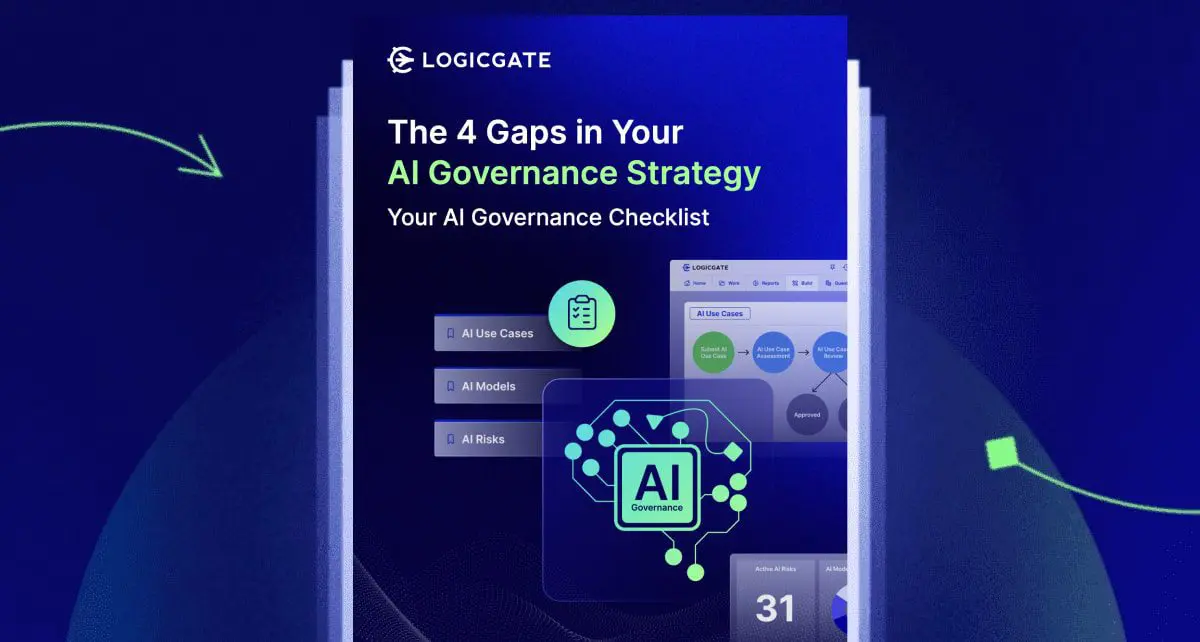The 4 Gaps in Your AI Governance Strategy

Download The AI Governance Checklist
Leaders now more than ever need guidelines to protect their organizations from the ever-evolving risks that come with AI’s growth potential.
As artificial intelligence (AI) capabilities rapidly advance, governing the responsible development and use of AI technology has become critical for organizations. Governments and regulatory bodies worldwide are introducing new rules and enforcement actions to ensure AI is deployed safely, ethically, and responsibly. From the U.S. AI Bill of Rights Blueprint to the EU AI Act, a strong focus on AI governance highlighting requirements around security, transparency, and accountability is emerging.
AI governance represents a fundamental shift in how businesses must approach AI. It involves implementing robust processes and controls to proactively identify, assess, and mitigate the unique risks AI can introduce across its entire lifecycle. Effective AI governance allows organizations to harness AI’s power while ensuring compliance with internal policies and external regulations.
According to OCEG, a global nonprofit think tank that provides standards, guidelines, and online resources to help organizations achieve Principled Performance:
- 82% of business leaders agree that companies must adopt generative AI or risk being left behind.
- Even with the majority in agreement, they also state that only 12% of organizations have an AI Governance program in place.
This Al Governance Checklist identifies four critical gaps that directly undermine the core objectives of any Al governance program: efficiency (speed to adoption) and effectiveness (holistic risk coverage enterprise-wide). Without addressing these strategic gaps, your Al Governance strategy will hinder competitiveness and leave your organization vulnerable to risks like cybersecurity threats and regulatory non-compliance. Bridging these gaps will drive innovation with accountability.